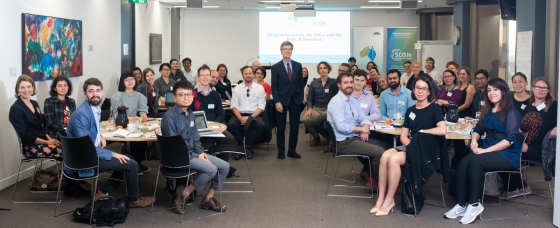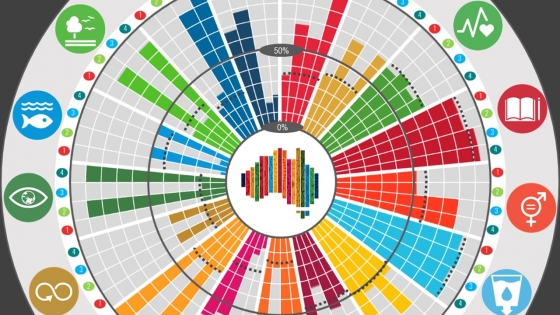What does your project aim to do and why is it important?
Our research uses integrated assessment modelling to simulate national scenarios and pathways towards sustainable development by 2030 and beyond. Such modelling allows researchers to make a set of assumptions about future conditions including policy, such as taxation and subsidies, and investment, such as public expenditure and private investment. The work also simulates future projections on a broad range of economic, social and environmental indicators.
Simulating these issues enables us to evaluate how different decisions taken today will affect a country’s development trajectory and future performance on sustainable development targets, including economic growth, employment, equality, energy, materials and greenhouse gas emissions. Such modelling can inform policy and investment decisions by governments and stakeholders by demonstrating how they can deliver fairer, greener and more prosperous nations by 2030.
What are you currently working on?
We recently completed a national SDG scenario modelling study for Australia, with the results published in Nature Sustainability. The study applies a national integrated assessment model to explore how different development scenarios impact on progress. These scenarios include ‘Growth at All Costs’, ‘Inclusive Growth’, ‘Green Economy’ and ‘Sustainability Transition’.
The results show us how each of these scenarios perform in terms of delivering progress towards a broad range of sustainable development targets. I am now finalising a similar national modelling study for Fiji developing and applying an integrated assessment model to explore a broader set of future scenarios, including high-ambition scenarios relating to accelerated action on climate change and scaled-up investment in achieving the SDGs.
Modelling allows us to understand key components of future transitions and transformations towards sustainable development, including the scale and pace of change needed to achieve the SDGs, along with investment needs. Our recent modelling explores progress on the SDGs by 2030 as well as longer-term coherence with global planetary boundaries and other frameworks by 2050.
The number of stakeholders involved in this process must be overwhelming. Who do you engage with?
Our research is nationally focused and of global relevance and we are working with technical partners including the Millennium Institute in the USA to develop our modelling capabilities. We regularly engage with stakeholders in the UN, government, and the academic community, including through the Sustainable Development Solutions Network (SDSN). Various levels of government have been interested in our recent modelling research in Australia. Currently, we are discussing the application of the model to meet policy needs with partners in the State government.
There has also been interest from other countries and from international organisations to undertake similar integrated modelling studies to support national decision making on the SDGs. We are engaging with UN and international partners in the Asia-Pacific region on current and future applications of the modelling research.
You have made extraordinary strides during your PhD. What have been some of the key impacts of your work?
My research so far has been exploratory, aiming to demonstrate the measures needed to achieve the SDGs and what the benefits would be for Australia and other countries in terms of economic prosperity, wellbeing and the environment. However, the work has been included in discussions and forums at the policy level. Specifically, my research has contributed to the work of the National Sustainable Development Council including the development of a national SDG progress report for Australia published online and several outreach forums on the outcomes of the study including the Institute of Public Administration Australia.
With the broader team working on this project, I have also published pieces in The Conversation regarding our research with the aim of informing the public debate around prosperity and Australia’s future, as well as national and international media. These outputs have gained considerable interest both in Australia and abroad and are important for including researchers, practitioners, policymakers and civil society engaged in these discussions.
What are the next key priorities for your project? Are there any challenges to achieving them?
The modelling study for Fiji will be the final case study in my PhD research and will be followed by the submission of my thesis in May. Our studies have revealed that achieving the SDGs in Australia and elsewhere will be extremely challenging, partly due to trade-offs between socio-economic and environmental objectives as well as the scale and pace of change required.
Even our most ambitious ‘Sustainability Transition’ scenario achieved around 70% progress on the SDGs for Australia by 2030. We intend to further extend the capabilities of our integrated assessment model to enable downscaled modelling at the state and local levels in Australia to inform decision making at these levels, as well as to develop and explore deep transformation scenarios which include far more ambitious investment and policy settings to explore what would be required to accelerate progress to 100% SDG achievement by 2030.
There is great potential for further development of our modelling capability and we are currently seeking funding from ARC for the next phase of our project, which would include coupling of modelling methods and frameworks, disaggregation from national to the state and local levels, and other model extensions.
There is considerable interest in the SDGs in Australia, particularly in the academic, NGO and private sectors, as well as in government at the state and local levels. We continue to find opportunities and collaborations in this space. However, a lack of leadership at the national level on issues such as climate change and sustainable development more broadly challenges our ability to have an impact on national policy making and to gain further investments.
Are you currently looking for collaborators?
We are currently seeking funding for further research and integrated modelling of deep transformation scenarios for Australia. This will include national modelling as well as sub-national modelling focused on priority regional areas (e.g. at the State level or regional level). As part of this, we are looking to build a multi-disciplinary team to better link modelling outputs with policy and investment needs and applications.
This next stage of the research will present several opportunities. There is great potential for the modelling to inform government decision making, policy targets and settings, and public expenditure and investment. There is also an untapped potential for the modelling to contribute to private sector investment decisions, for example specific sectors (agriculture, manufacturing, construction, tourism, mining) that may be interested in demonstrating their contribution to the SDGs or major investment or super funds looking to align investment with the SDGs.
Acknowledgements
Cameron wishes to acknowledge Prof Graciela Metternicht and Prof Tommy Weidmann for their support of this project as his PhD supervisors.

